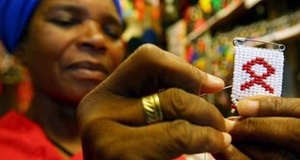#ItsNotMyPeriod: Hashtag Activism's Challenge to Narratives of Menstrual Stigma
By
2022, Vol. 14 No. 09 | pg. 1/1
IN THIS ARTICLE
AbstractPerceptions of menstruation as a taboo subject have historically characterized Western and non-Western societies alike and persist today, both perpetuating harmful cultural understandings of women’s abilities and normalizing institutional practices that exacerbate gender disparities. With the advent of viral social media movements or “hashtag activism,” however, challenges to these oppressive, misogynistic mainstream narratives have become increasingly powerful. Centered on menstrual activism and dismantling menstrual stigma, #ItsNotMyPeriod is one such movement. This paper argues that #ItsNotMyPeriod reveals the subversive potential of social media platforms (particularly Twitter) to elevate perspectives that challenge stigmatized narratives of menstruation through a post-structural feminist lens. Through a critique of the hashtag’s advertising origins and corporate involvement in neoliberal feminist messaging, I suggest that critical engagement with such implications of hashtag activism can nonetheless overcome these limitations. Long shunted to the private lives of women and treated as a “shameful form of pollution” by Western respectability politics, feminist scholar Chris Bobel argues in New Blood: Third-Wave Feminism and the Politics of Menstruation, menstruation has struggled to gain legitimacy in the civil discourse of so-called “developed” societies (Bobel 31). A reflection of the historically deep-seated patriarchal norms that systematically invalidate and control women and their reproductive and bodily autonomy, negative perceptions of menstruation continue to persist. This stigma manifests in several ways. First, menstruation is pathologized and weaponized to delegitimize women’s accomplishments and ambitions; “She’s too weak and emotional to lead” is an all-too-common refrain when it comes to women in positions of power, whether they step up in the workplace or run for office. Second, menstrual pain is “trivialized and interpreted as…psychosomatic proof of women’s frailty and instability,” and therefore their inherent inferiority (Bobel 36). Finally, as Bobel suggests in her chapter on “Feminist Response to PMS and PMDD,” the classification of premenstrual syndrome (PMS) and the later, more controversial Premenstrual Dysphoric Disorder (PMDD) as mood disorders reflects a central tension feminists face between adequately addressing the issues of women’s health and subscribing to antifeminist ideals, rehashing the “updated underpinnings [of] the Victorian image of woman as inexorably ruled by her reproductive cycle, made unfit by her cyclicity for full participation in commerce and public life” (Bobel 37). This misogynistic understanding of menstruation remains present today, threatening to undermine the progress of women who seek to assert themselves and advance in society. Combined with menstruation’s taboo nature and the resulting discomfort any dialogue around the issue causes, these challenges compound in difficulty. Given the deep-seated nature of these challenges, it would seem that they are insurmountable. Yet, one possible, new antidote has emerged in the current online climate with the rapid grassroots proliferation of “hashtag activism,” raising the question: Can the use of social media help to intervene in these years of stigma? Only recently, buoyed by a wave of menstrual activism, have attempts to counter and redress such understandings entered the spotlight. One important attempt became visible in 2016; through a video titled “Your period doesn’t define you” that was viewed over 1.8 million times, multinational personal care corporation Kimberly-Clark and its Canadian menstrual hygiene products brand U by Kotex launched the #ItsNotMyPeriod campaign, arguing that women’s attitudes, emotions, and opinions should never be discredited by their periods. In this video, actors play out a scene in which one woman asserts control over a stressful work meeting by raising her voice, then delegating tasks to her fellow coworkers. Participants in the audience are then asked to respond to several prompts about the events that took place, including “who do you think is on her period?”; “who do you think was the leader?”; and “do you think she’s acting like that because she’s on her period, or that’s just her personality?”These questions encourage the interviewees to re-evaluate the gendered assumptions they have made, and the video thus ends on a decisive note. “Periods don’t define women,” it concludes, “women do…It’s me, #ItsNotMyPeriod” (U By Kotex). Subsequently, the video spurred the hashtag #ItsNotMyPeriod on Twitter, where the stark discussion of such a taboo topic in the context of the public forum of social media quickly exposed the realities of menstrual stigma. Indeed, the resulting online discussion demonstrated how the popular, accessible nature of Twitter could inherently facilitate the dissemination and mobilization of marginalized voices and stories that would not only help to scrutinize the limitations of menstrual stigma but also liberate the hashtag from them. Although the hashtag’s corporate origins have the potential to overshadow its feminist messaging with a performative, neoliberalist tone, #ItsNotMyPeriod’s specific contrast of taboo and visibility at the intersection of menstrual and hashtag activism presents a uniquely effective, subversive opportunity to dismantle menstrual stigma, along with existing, misogynistic narratives about menstruation in society at large. From a Moment to a Movement: The Development of #ItsNotMyPeriodAt its inception, the hashtag’s purpose was to invite social media users to share their experiences with menstrual stigma, and this shaped its earliest contribution to menstrual activism. Several months after the launch of the #ItsNotMyPeriod campaign, one of the most popular (and defining) Twitter threads under this hashtag was started by Canadian actress Natasha Negovanlis, who tweeted, “Sharing a personal story today. Have you ever had a similar experience? Lemmie know what you think using #itsnotmyperiod & please share! #ad.” Speaking in a video (viewed over 24,000 times) attached to her tweet (which has since been retweeted 666 times, quoted 59 times, and liked by over 2500 users), Negovanlis shares her stories about how the fear of being labeled as “too demanding,” “too difficult to work with,” or as “a bitch that’s PMSing” and experiencing “that time of the month” has prevented her from advocating for herself at work (Negovanlis 0:16). She argues that when a woman is painted with these assumptions, it “shatter[s] her confidence and invalidates her feelings”; as a result, Negovanlis asserts that sharing her own story can demonstrate that “by being honest with each other, we can open this conversation and bring it to light and hopefully change things” (Negovanlis 0:40). To accomplish this, she asks others to share their opinions and experiences under the hashtag #ItsNotMyPeriod—and the hundreds of responses that she receives in her thread indicate that she has leveraged the visibility of the hashtag rather effectively. Accordingly, a major theme that emerges in these responses shared by women is a nearly universal experience of how their periods have been weaponized to justify workplace and interpersonal invalidation against them. Echoing Negovanlis’ sentiments in her tweet, user @ZettStai (Lizette Stai) replies, “I’m super self conscious if I feel too assertive or aggressive. Most of the time I feel like I soften my requests by making them questions. It’s a really hard habit to break especially in a male dominated field. It’s very easy to lose your voice #itsnotmyperiod.” Stai adds that she deals with this “all the time,” a comment that reflects the pervasive nature of the patriarchal culture that pathologizes periods and shames women for them. Consequently, she has actively attempted to occupy less space for the comfort of her male coworkers, at the expense of her own needs. Indeed, as Bobel explains, “Women are supposed to be docile, patient and altruistic,” so the “misogynist social construction of the syndrome [PMS]” means that any indications to the contrary, such as when a woman stands up for herself, present her as improper and inadequately feminine (Bobel 37). Because of this incongruity, women are left vulnerable to shallow, often biology-derived attacks (in the case of menstruation and PMS) meant to other them and push them back into that mold. These forces hinder even basic requests for respect, again corroborating Bobel’s argument that menstruation has been deeply pathologized. Voicing similar frustrations in short, declarative sentences, user @mariahwester states: “Tired of having to tell the boys at work to call the servers by their names rather than “baby.” #itsnotmyperiod, it’s respect.” Evidently, this tweet’s author articulates a refrain that she has used many times before in the face of objectifying statements meant to redirect and distract from her demands to personhood by conflating them with her reproductive biology. Not only does this dismissive pattern of behavior diminish the individuality of the victim, but it also directly invalidates their emotions, as user @Aiwendil94’s story illustrates: “The few times I stood for myself in high school, people would tell me to “chill” and asked if I was on my period. #itsnotmyperiod.” These tweets represent only a small subset of the many stories highlighted by the hashtag #ItsNotMyPeriod, and they collectively aid in raising societal awareness of the negative, deeply personal—and deeply human—impacts of menstrual stigma. In addition to pointing out the ways in which menstruation has been pathologized, the hashtag has also elevated women’s deliberate efforts to de-pathologize menstruation. Throughout her original tweet’s thread, Negovanlis continues to engage with commenters, declaring, “I don’t understand the shame we associate with pads and tampons. It’s natural and beautiful!” By propagating positive narratives through the coupled adjectives of “natural” and “beautiful,” Negovanlis’s tweet redeploys the tropes of natural beauty and biology that have traditionally been used in pathologized narratives about menstruation to challenge those same ideas. Not only does this make the hashtag subversive, but it also moves the hashtag away from neutrality in simply sharing users’ experiences towards a more productive conversation focused on actively dismantling menstrual stigma. More directly to this point, CP24 Breakfast, a Canadian morning news television show, tweets, “We’re shrugging off the stigma around women’s periods with the former #Bachelorette @kaitlynbristowe! #itsnotmyperiod.” Their tweet, punctuated by the evocative emoticons of a rose and a fist to symbolize feminine power, is accompanied by a charming GIF of Bristowe and a female anchor brushing off their shoulders to demonstrate their rejection of menstrual stigma, as well as their unapologetic reclamation of the biological—resonating with the sentiment expressed by Negovanlis.1 The juxtaposition of this lighthearted imagery and its far-reaching medium with the long-taboo subject of menstruation thus serves as an effective repudiation of its shameful connotations and the patriarchal construction that perpetuates them. Beyond working to reframe the interpersonal discourse and culture surrounding menstruation, women who have responded to #ItsNotMyPeriod have propelled the aims of the hashtag forward by promoting tangible, grassroots-level menstrual activist goals. Drawing attention to a photography campaign by Easy, a small, female-led subscription tampon business, to “[normalize] strings and blood stains” associated with menstrual hygiene and management, Twitter user @SarahBilloudet praises its “Amazing #OOH campaign,” accompanied by a number of hashtags including #Noshame, #period, #livetweetyourperiod, and #itsnotmyperiod. Rather than focusing on the idea of menstrual stigma itself, which can be abstract and inaccessible at times, Billoudet utilizes a combination of social media and the entrepreneurial endeavors present on the platform to emphasize imagery emblematic of menstruation as a primary mode of tackling its negative associations. Meanwhile, user @Morgana_Kay concentrates on the issue of period poverty, sharing in Negovanlis’s thread that she “was horrified by the prices for pads, tampons and anything else related to feminine [menstrual] hygiene” in her Canadian province, and that prices were prohibitive to the extent that menstruators have had to “[resort] to using socks because they couldn't afford an alternative.” She then cites how menstrual hygiene products were added to a federal welfare grocery subsidy program only “years after [the subsidy] was introduced,” arguing that “Hygiene products should be a right and not an afterthought.” Here, the hashtag takes on yet another dimension, highlighting explicitly actionable policy demands bolstered by a vivid personal story; this format strongly mirrors advocacy actions undertaken by lobbyists in legislative offices—a resemblance that compellingly legitimates #ItsNotMyPeriod’s claim to hashtag activism. A Modern “Écriture Feminine:” Redefining Post-Structural Feminism on TwitterUndoubtedly, #ItsNotMyPeriod has facilitated the development of myriad forms of menstrual activism, and its success in doing so can be strongly attributed to the popular medium of social media, which is peculiarly well-suited to the task of bringing such a stigmatized topic into public discourse. Beyond the range and resonance of the messages shared on the platform, applying the theoretical lens of post-structural feminism that Hélène Cixous outlines in her essay “The Laugh of the Medusa” to the act of writing tweets helps to elucidate the hashtag’s effectiveness more clearly. Writing forcefully and eloquently, Cixous both explicates and demonstrates through her own words the power of writing and “female-sexed texts” as a method for women to reclaim their freedom and redefine themselves within a patriarchal society and its “capitalist machinery,” including “publishing houses [filled with] smug-faced readers, managing editors, and big bosses,” that have repressed both their voices and bodies (Cixous 877). Although Cixous refers to more conventional forms of communication in her essay, the ideas she espouses are also strongly applicable to social media. Indeed, the soapbox offered by social media presents the perfect alternative to traditional, male-dominated institutions of writing and publishing, as women are given unfettered access to novel modes of expression, just as Cixous prescribes. Consequently, women are able to take advantage of this freedom to spread their own non-stigmatized narratives about menstruation through tweets unmediated by “antilove” or internalized misogyny, which Cixous argues have been deeply ingrained in women by male institutions. This then provides women with the opportunity to advocate for themselves without “punish[ing] [themselves] for [the very act of] writing,” thereby helping to dismantle misogynist constructions of issues such as menstrual stigma (Cixous 878). Therefore, within this unusual but surprisingly relevant interpretation of Cixous’s framework, women’s tweets under the #ItsNotMyPeriod hashtag ultimately achieve her proposed “écriture feminine,” or “feminine practice of writing…more and more rapidly pervasive now, a fiction that produces irreducible effects of femininity” that transcends, and even negates, misogynistic literary traditions and institutions to affirm the individuality of women and enact social change (Cixous 883). To this end, the expressions of solidarity that #ItsNotMyPeriod evokes allow us to observe the truth of Cixous’s conception of a unifying, rebellious feminist language as it is reinterpreted through social media. One such expression occurs when user @PaulaCarrascoGa describes her relief at the hashtag’s message and ability to articulate her grievances as a woman under Negovanlis’s thread: “Finally someone said what I’ve always thought and hundreds of people are listening to it.” A humorous GIF attached to the tweet accentuates this sense of catharsis, depicting actress Kristen Bell clasping her hands together and exclaiming, “My entire life I’ve been waiting for this moment.” As Cixous imagined (though perhaps not in this exact format), the unconventional, multimedia form of expression that Twitter makes possible quite literally “[sweeps] away [the] syntax” and the “regulations and codes” of traditional writing platforms (Cixous 886). The tweet’s visual emphasis, with its animated conveyance of triumphant joy and excitement through the gestures and expressions of a familiar, well-known public figure, also makes its message accessible to a wider audience, allowing that message (and the emotions imparted by it) to become all the more subversive. Additional replies like @PaulaCarrascoGa’s reveal that even when other women do not share similar experiences, they are still motivated to stand in support of those who have been victimized by a culture of menstrual stigma. User @AlexaCondesso, for instance, writes: “I don’t have any similar experiences, but I just [want to] say that I think it’s awesome the way you’re raising awareness to this,” while user @NatsNotHere acknowledges, “Can’t say I share that experience but I do realize that’s a pretty rare privilege.” Overall, the various perspectives shared through #ItsNotMyPeriod demonstrate the hashtag’s ability to bring disparate voices together into a collective movement against patriarchal structures of oppression under feminist Twitter, which provides the common language envisioned by Cixous. Thus, social media platforms hold significant potential to be subversive sources of decentralized, horizontal change in sharing and popularizing narratives of menstrual stigma and female empowerment. Fauxtivational or Inspirational? A Neoliberalist Critique of Femvertising and Potential SolutionsInasmuch as the messaging of this hashtag has elicited outpourings of solidarity and support, however, there have also been derisive, reactionary responses on Twitter aimed at undermining its significance. One of the hashtag’s most vulnerable targets is its origin as an advertising campaign, which critics suggest is not only performative, but also disempowering. User @SarahMariePardy comments, “The #ItsNotMyPeriod hashtag/marketing strategy is nice and all, but for real, once a month it IS my period.” Her lukewarm response, understanding but exasperated, reflects the sentiment of an audience jaded by the constant stream of motivational feminist messaging that has recently flooded popular culture and media, and particularly its exploitation by companies to promote their products (a phenomenon known as “femvertising”). Others have been even more hostile. Completely bypassing the point made by the hashtag, @CarlaBurlando claims, “#itsnotmyperiod I just lack self regulation skills and am emotionally immature. #fail.” Her statement signifies the difficulty of navigating one of the central tensions around menstrual stigma as posited by Bobel and discussed at the beginning of this paper: “Blaming biology for the behavior of women (or men) is a classically antifeminist position, but so is the failure to take women at their word and validate their experiences” (Bobel 37). As the vicious nature of Burlando’s response demonstrates, the lack of clarity surrounding menstruation as a feminist issue—owing in part to its taboo preconceptions—can easily cause messages that attempt to bring it back into the spotlight to backfire. Moreover, Burlando’s further remarks suggest that a general skepticism towards femvertising (hinted at by Pardy as well) presents additional grounds for reproach: “Just saw @ubykotex #itsnotmyperiod commercial. Fire your marketing person. That concept can't be mocked hard enough.” Such backlash to the campaign is not limited in its severity, going as far as to disavow the existence of menstrual stigma in the first place. User @jilltrippedjack, for instance, asks incredulously: “Were these marketing individuals trying to combat stereotypes from guys that only exist in 1950 style satires[?] #offensive #ItsNotMyPeriod.” By directly rejecting the issues presented by menstrual stigma and suggesting that we live in a post-menstrual society, this user’s comment introduces strains of thought that are ignorant, at best, and misogynistic, at worst. Evaluating these more overtly negative responses to #ItsNotMyPeriod uncovers contemporary barriers to dismantling menstrual stigma, whether it is the limitations of corporate involvement in feminist messaging, or the persistence of patriarchal narratives themselves. In fact, Twitter users are not the only ones to have voiced these kinds of concerns; in her book Empowered: Popular Feminism and Popular Misogyny, Sarah Banet-Weiser articulates the problems inherent to femvertising through a criticism of popular, neoliberal feminism. Banet-Weiser defines popular feminism as feminism that “is expressed and practiced on multiple media platforms” and “attracts other like-minded groups and individuals” (Banet-Weiser 44). In other words, popular feminism, she suggests, is a strain of feminism that is widely accessible to the public, and perhaps more problematically, deliberately fashioned to become more palatable to that audience. As such, Banet-Weiser argues that an “economy of visibility” privileges media visibility “as its central logic” and facilitates certain brands of popular feminism and female empowerment, specifically corporate media and advertising campaigns such as Always’s #LikeAGirl campaign (Banet-Weiser 43). Acknowledging the desire of corporations to appeal to as broad of an audience as possible through popular feminist ads, Banet-Weiser contends that the most successful or visible of these messages represent neoliberal feminism, wherein “there is no critique of the ways that capitalist success might be due to the divisions of labor required by capitalism itself; rather, it is up to individual women to believe that they ‘can’” (Banet-Weiser 53). Therefore, by positioning women as both having sustained gendered injury and having economic capacity as consumers to rectify that injury, popular feminist advertising uses “vulnerability as a selling point” to signal the existence of a “gendered crisis” that can easily be resolved by consumption of a given product (Banet-Weiser 48). As a result, any meaningful impact these campaigns might have is constrained to a neoliberal, individualist, and capitalist framework, ultimately creating a flawed and deceptive “market for empowerment” that forms a “mandate to ‘empower oneself’” (Banet-Weiser 47). The more sinister implication of these campaigns, then, is that by co-opting and sidetracking feminism to the celebration of the economic power held by women consumers of “particular race and class—typically white and wealthy enough to purchase the latest trends and a smart phone” (Banet-Weiser 47), they not only alienate a large proportion of women and erase their lived experiences, but they also absolve society of the collective responsibility of challenging structural issues of sexism and patriarchy. As fatalistic as Banet-Weiser’s assessment of femvertising seems in suggesting that corporate-origin campaigns such as #ItsNotMyPeriod are fundamentally unable to overcome their limitations as perpetrators of neoliberal feminism, other scholars qualify her argument by suggesting that campaigns that avoid diverting focus from the feminist issues they present to their products can, on the contrary, be productive. By discussing the evolution of conflicting discourses of menstrual stigma as perpetuated by menstrual hygiene technologies and advertisements in her essay “‘Changing the Conversation’ about Menstruation from ‘Very Personally Yours’ to #ItsNotMyPeriod: A Discursive Analysis of Menstrual Products and Advertisements,” Cayo Gamber suggests that these texts’ subversiveness lies within their ability to make the menstruating body visible (Camber 99). Because of this visibility—a boon in the “economy of visibility” that Banet-Weiser imagines—it becomes possible to bring the discussion of women’s health and acceptance of female bodies to the forefront of public life. In particular, Gamber focuses in on #ItsNotMyPeriod as part of a larger legacy of corporate messaging by Kimberly-Clark and its Kotex brand, arguing that it “call[s] for education and honest conversation” and thus “interrogate[s] long-held assumptions” about menstruation as it relates to women in positions of power (Gamber 98). The original video’s interview format facilitates this purpose well, as its open-endedness becomes an effective method of challenging the viewer to engage in self-reflection around any preconceived notions they may hold about menstruation and the other subjects of the scene it depicts. “Moreover, and most importantly,” Gamber concludes, “a product is not offered as the answer….Here, the answer is about engaging in a conversation” (Gamber 98). In this respect, the #ItsNotMyPeriod video appears to have been successful in starting a conversation as well as in creating the visibility discussed above through its focus on the woman as menstruator, rather than consumer; notably, not a single mention of any product appears in the video. Consequently, the video is liberated from the “twinned tropes of capacity and injury” that plague many femvertising campaigns and thereby becomes a more effective vehicle for feminist activism (Banet-Weiser 49). And as the plethora of different Tweets rising to the video’s call to action shows, #ItsNotMyPeriod’s impact and core message are indeed able to transcend its potentially problematic origins. Even if #ItsNotMyPeriod cannot be divorced from its capitalist origins, then, the positive responses on Twitter to the original advertisement nonetheless reveal that the campaign and its hashtag maintain their subversive capacity as activism. Perhaps recognizing this, user @devonmcleay simply commends U by Kotex for the campaign and indicates that its message has resonated strongly with them, stating, “I know it is an ad, but it is a good one. well done @ubykotexca…#itsnotmyperiod.” Similarly, @sarahfoofoo79 declares, “This is the kind of #ad I don’t mind watching/sharing. Important and powerful #itsnotmyperiod.” Their responses, which explicitly acknowledge #ItsNotMyPeriod’s corporate origins, demonstrate that its feminist message takes predominance over its origins; it has both effectively invited engagement online and even provoked action in the latter example—hallmarks of successful hashtag activism. Amelie Matte Zakaib, another Twitter user with the handle @AmmmieM, shared, “Gleefully scrolling through @ubykotex #itsnotmyperiod tweets. Hooray for actually effective fauxtivational digital marketing!” Zakaib’s portmanteau of “faux” and “motivational” signal her awareness of the very valid skepticism that the public holds towards falsely empowering “feminist” ads, which Banet-Weiser points to in her critique of femvertising. Yet, this awareness has evidently not detracted from her experience of the hashtag’s ultimate impact, as conveyed by her “glee” and enthusiasm when witnessing the surge of activism under #ItsNotMyPeriod. What is more, the coexistence of these two sentiments within these tweets displays the potential for reclaiming corporate messaging as a platform for feminist activism, since they suggest that Twitter users are fully capable of adapting their understandings of feminism to be meaningful within a capitalist context. When both the advertiser and audience critically interrogate the constraints of neoliberal feminism and actively work to repudiate the oppressive connotations associated with popular mediums including social media and advertising, those mediums become promising channels for activism, especially when the topic at hand—menstruation—is so stigmatized. Conclusion: Social Media as Transformative Feminist SpaceAlthough the investigation of menstruation as a feminist issue is still an emerging field of scholarship, this case study of #ItsNotMyPeriod demonstrates the possibilities for the success of menstrual activism on highly visible, far-reaching popular platforms such as social media (and initially, advertising). The illuminating properties of Twitter are distinctly suited to tackling the taboo connotations that society ascribes to menstruation, mobilizing women’s voices in an unconventional manner to pose a direct challenge to those rigid norms and traditions. Once elevated to the public eye, both regular Twitter users and dogmatic activists advocating for change under hashtags like #ItsNotMyPeriod are poised to share their stories and raise awareness of stigmatized topics—menstrual and otherwise. The grassroots momentum offered by a tweet’s easy accessibility and rapid spread through communication networks carries forward, eliciting the development of other forms of activism beyond that initial wave, whether it be calling for shifts in societal perceptions of menstruation or advocating for changes to public policy. Of course, it is still important to note the limitations of the popular platforms that facilitate the growth of such movements, particularly when it comes to recognizing the priorities of those who control those platforms—hence, the need to re-examine our engagement with popular, neoliberal feminism and the kinds of messages that perpetrate it. Ultimately, however, when we give women more credit as critical viewers and users of social media and demand greater accountability from the originators of popular feminist messaging and corporate campaigns to legitimately call into question patriarchal narratives of menstruation rather than evading the deeper forces at play, we see that hashtag activism can become a potent conduit of feminist transformation. ReferencesBanet-Weiser, Sarah. “The Funhouse Mirror.” Empowered: Popular Feminism and Popular Misogyny, by Sarah Banet-Weiser, Duke University Press, 2018, pp. 41–64. https://doi-org.ezp-prod1.hul.harvard.edu/10.1215/9781478002772. Bobel, Chris and Judith Lorber.New Blood: Third-Wave Feminism and the Politics of Menstruation.Rutgers University Press, 2010.Project MUSEmuse.jhu.edu/book/14264. Cixous, Hélène, et al. “The Laugh of the Medusa.” Signs, vol. 1, no. 4, 1976, pp. 875–893. JSTOR, www.jstor.org/stable/3173239. Gamber, Cayo. “‘Changing the Conversation’ about Menstruation from ‘Very Personally Yours’ to #ItsNotMyPeriod: A Discursive Analysis of Menstrual Products and Advertisements.” Menstruation Now: What Does Blood Perform?, edited by Berkeley Kaite, Demeter Press, 2019, pp. 81–107. www.jstor.org/stable/j.ctvg252tc. "#ItsNotMyPeriod | Your period doesn't define you." YouTube, uploaded by U By Kotex, 17 Aug. 2016, https://www.youtube.com/watch?v=Qq_H02TSE-g. Tweets@Aiwendil94. “The few times I stood for myself in high school, people would tell me to “chill” and asked if I was on my period. #itsnotmyperiod.” Twitter, 14 Dec. 2016, 3:17 p.m., https://twitter.com/Aiwendil94/status/809130089422225408. @AlexaCondesso. “I don’t have any similar experiences, but I just wanna say that I think it’s awesome the way you’re raising awareness to this.” Twitter, 14 Dec. 2016, 2:54 p.m., https://twitter.com/AlexaCondesso/status/809124410355576832. @AmmmieM (Amelie Matte Zakaib). “Gleefully scrolling through @ubykotex #itsnotmyperiod tweets. Hooray for actually effective fauxtivational digital marketing!” Twitter, 20 Sep. 2016, 6:45 p.m., https://twitter.com/AmmmieM/status/778364556049575936. @CarlaBurlando. “#itsnotmyperiod I just lack self regulation skills and am emotionally immature. #fail.” Twitter, 28 Sep. 2017, 1:50 a.m., https://twitter.com/CarlaBurlando/status/913279755985707008. @CarlaBurlando. “Just saw @ubykotex #itsnotmyperiod commercial. Fire your marketing person. That concept can't be mocked hard enough.” Twitter, 28 Sep. 2017, 1:35 a.m., https://twitter.com/CarlaBurlando/status/913276034237177856. @CP24Breakfast (CP24 Breakfast). “We’re shrugging off the stigma around women’s periods with the former #Bachelorette @kaitlynbristowe! #itsnotmyperiod.” Twitter, 27 Oct. 2016, 8:20 a.m., https://twitter.com/CP24Breakfast/status/791615492851167232. @devonmcleay. “I know it is an ad, but it is a good one. well done @ubykotexca youtu.be/MHsc7cO92mv #itsnotmyperiod.” Twitter, 25 Oct. 2016, 12:56 p.m., https://twitter.com/devonmcleay/status/790960214023417857. @jilltrippedjack. “Were these marketing individuals trying to combat stereotypes from guys that only exist in 1950 style satires. #offensive #ItsNotMyPeriod.” Twitter, 31 Aug. 2016, 3:59 a.m., https://twitter.com/jilltrippedjack/status/770893660116299776. @mariahwester. “Tired of having to tell the boys at work to call the servers by their names rather than “baby.” #itsnotmyperiod, it’s respect.” Twitter, 14 Dec. 2016, 6:05 p.m., https://twitter.com/mariahwester/status/809172406015168513. @NatsNotHere (Natalie Hudson). “Can’t say I share that experience but I do realize that’s a pretty rare privilege.” 14 Dec. 2016, 2:50 p.m., https://twitter.com/NatsNotHere/status/809123306217570304. @natvanlis (Natasha Negovanlis). “Good for you! I don’t understand the shame we associate with pads and tampons. It’s natural and beautiful! #itsnotmyperiod.” Twitter, 14 Dec. 2016, 3:38 p.m., https://twitter.com/natvanlis/status/809135445753942016. @natvanlis (Natasha Negovanlis). “Sharing a personal story today. Have you ever had a similar experience? Lemmie know what you think using #itsnotmyperiod & please share! #ad.” Twitter, 14 Dec. 2016, 2:46 p.m., https://twitter.com/natvanlis/status/809122371227500544. @Morgana_Kay (Morgana Kay). “Super late to this tweet. I moved to Iqaluit, NU in August and was horrified by the prices for pads, tampons and anything else related to feminine hygiene. Only in the last few months have they been added to the Northern Subsidy years after it was introduced. Some people have resorted to using socks because they couldn't afford an alternative. Hygiene products should be a right and not an afterthought.” Twitter, 20 Dec. 2019, 2:08 p.m., https://twitter.com/Morgana_Kay/status/1208101775158521857. @PaulaCarrascoGa. “finally someone said what I’ve always thought and hundreds of people are listening to it #itsnotmyperiod.” Twitter, 14 Dec. 2016, 3:13 p.m., https://twitter.com/PaulaCarrascoGa/status/809129119229378560. @SarahBilloudet (Sarah Billoudet). “Amazing #OOH campaign for tampon delivery company @easyperiod #Noshame #period #livetweetyourperiod #itsnotmyperiod #scs2846df @COSSETTEen.” Twitter, 25 Oct. 2016, 4:48 p.m., https://twitter.com/SarahBilloudet/status/791018639570898945. @sarahfoofoo79 (Dr. Sarah Andrews). “This is the kind of #ad I don’t mind watching/sharing. Important and powerful #itsnotmyperiod.” Twitter, 7 Dec. 2016, 1:17 p.m., https://twitter.com/sarahfoofoo79/status/806563249160327168. @SarahMariePardy. “The #ItsNotMyPeriod hashtag/marketing strategy is nice and all, but for real, once a month it IS my period.” Twitter, 16 Sep. 2016, 6:36 p.m., https://twitter.com/SarahMariePardy/status/776912580300320768. @ZettStai (Lizette Stai). “ALL THE TIME. I’m super self conscious if I feel too assertive or aggressive. Most of the time I feel like I soften my requests by making them questions. It’s a really hard habit to break especially in a male dominated field. It’s very easy to lose your voice #itsnotmyperiod.” Twitter, 30 Jul. 2018, 12:41 p.m., https://twitter.com/ZettStai/status/1023971748390166530. Endnotes1.) While the tension presented by this reclamation of reproductive biology as an avenue of de-pathologizing menstruation has analytical merit, it also poses the danger of being trans-exclusionary. The scholarly sources I engage with in this paper primarily deal with menstruation as a feminist issue—an inherently restrictive lens, as it focuses on the experiences of cis-gendered women. As understood in this paper’s context and its narrowly defined forms of menstrual stigma, presenting as female has a very real influence on whether society chooses to weaponize stereotypes of menstruation against someone; however, the discourse around menstruation as a broader biosocial issue should be inclusive of all menstruators. Biology does not define gender, and it would be more accurate to use the term “menstruators” rather than “women” when discussing menstrual stigma outside of the narrow scope of this paper. As a cis-gendered woman, I acknowledge that this is a shared space, and I will defer to transgender scholars and theorists on this matter where possible. Suggested Reading from Inquiries Journal
Inquiries Journal provides undergraduate and graduate students around the world a platform for the wide dissemination of academic work over a range of core disciplines. Representing the work of students from hundreds of institutions around the globe, Inquiries Journal's large database of academic articles is completely free. Learn more | Blog | Submit Latest in Women's & Gender Studies |


















